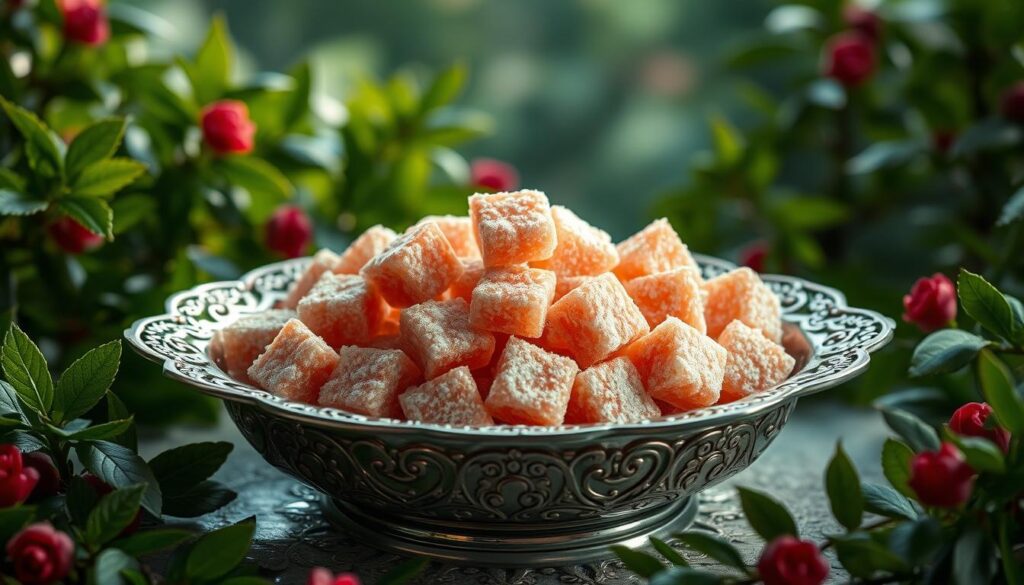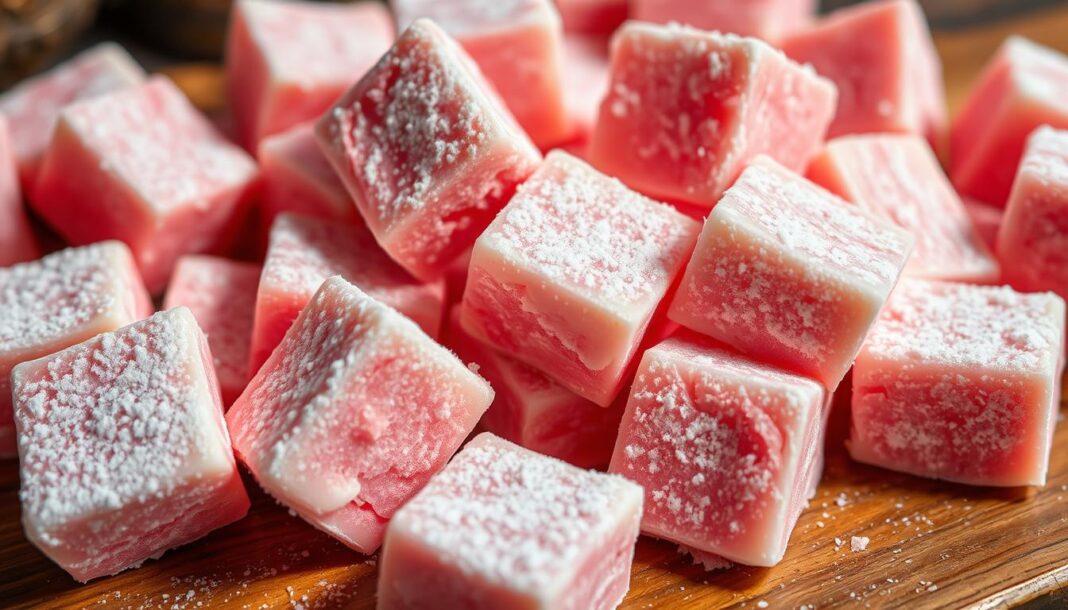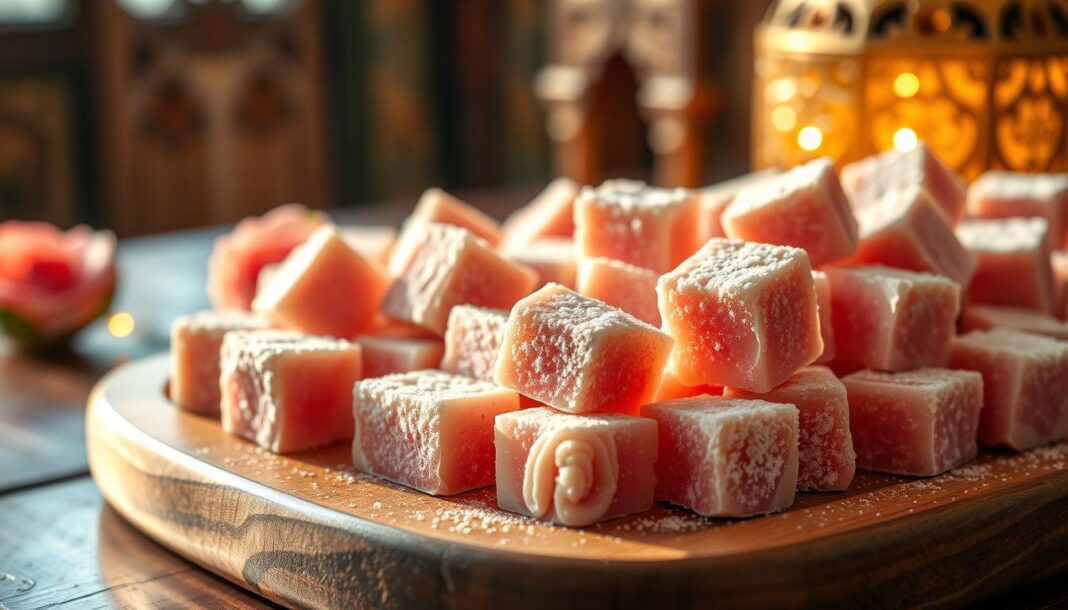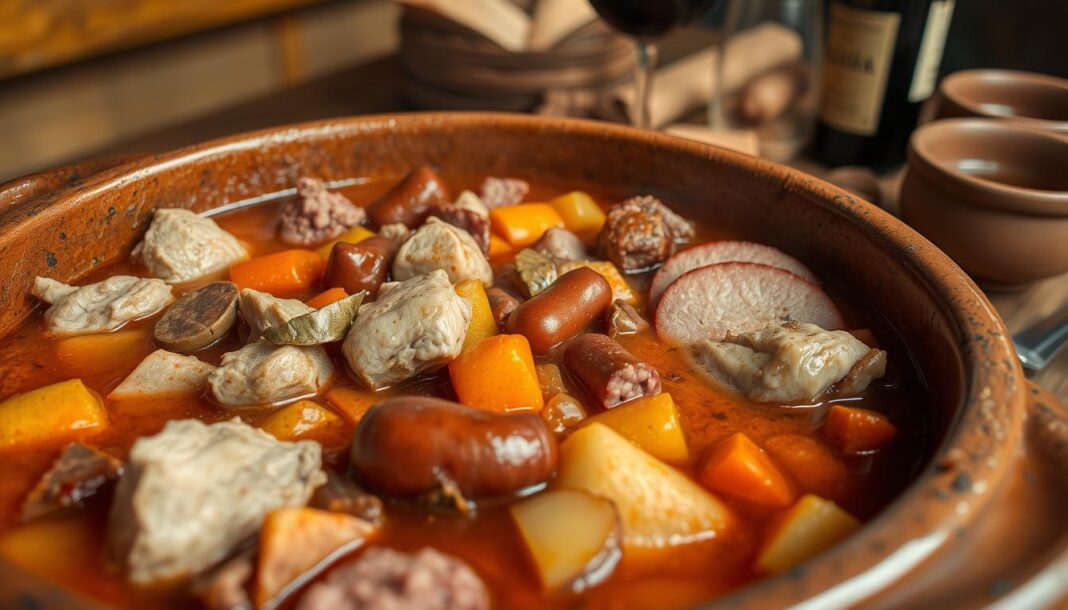In C.S. Lewis’s beloved fantasy series, The Chronicles of Narnia, a simple confectionery item plays a pivotal role in the narrative. Turkish Delight, a sweet treat with Middle Eastern origins, becomes a powerful literary device that captivates readers’ imaginations.
The White Witch’s use of this candy to tempt Edmund Pevensie is a masterstroke of storytelling, making it one of literature’s most famous food items. But why did C.S. Lewis choose Turkish Delight specifically for this pivotal scene? We’ll explore the significance of this sweet treat in the context of the story and its cultural impact on readers.
Key Takeaways
- The significance of Turkish Delight in The Chronicles of Narnia extends beyond its literal meaning as a sweet treat.
- C.S. Lewis’s choice of Turkish Delight was strategic, leveraging its exotic and tempting nature to further the plot.
- The mention of Turkish Delight in the narrative has sparked curiosity among Western readers about this Middle Eastern confection.
- The cultural impact of Turkish Delight in literature is a fascinating topic that warrants further exploration.
- The use of food as a literary device is a powerful tool in storytelling, as seen in the temptation of Edmund.
The Magical Allure of Turkish Delight in Narnia
The allure of Turkish Delight in Narnia is more than just a sweet treat; it’s a tool of manipulation wielded by the White Witch. In C.S. Lewis’s narrative, the enchanted candy serves as a pivotal element in Edmund’s betrayal, symbolizing the broader themes of temptation and control.
Edmund’s Fateful Encounter with the White Witch
Edmund’s first encounter with the White Witch is a defining moment in The Lion, the Witch and the Wardrobe. The White Witch’s offer of Turkish Delight and “something hot to drink” establishes a false sense of hospitality, playing on Edmund’s physical hunger and emotional need for special treatment. This initial interaction sets the stage for Edmund’s gradual entrapment under the Witch’s influence. The addictive properties of the magical Turkish Delight mirror real-world temptations, making this fantasy element relatable to readers.
The Enchanted Sweets as a Tool of Temptation
The White Witch uses Turkish Delight not just as a treat but as a calculated tool of manipulation. The enchanted candy creates a physical bond between Edmund and the Witch, symbolizing his growing allegiance to her cause. This temptation scene parallels other famous narratives in literature and religious texts, establishing a pattern that resonates with readers across cultural backgrounds. The use of sugar-coated delight as a means of control highlights the Witch’s cunning and the vulnerability of her victims.
| Aspect | Description | Significance |
|---|---|---|
| Temptation | The White Witch uses Turkish Delight to tempt Edmund. | Represents the initial step in Edmund’s betrayal. |
| Addiction | The magical properties make the Delight addictive. | Mirrors real-world addictions, making the narrative relatable. |
| Manipulation | The Witch manipulates Edmund through the Delight. | Highlights the Witch’s cunning and control. |
| Symbolism | Represents the broader themes of temptation and control. | Adds depth to the narrative, engaging readers on multiple levels. |
By analyzing the role of Turkish Delight in Narnia, we gain insight into C.S. Lewis’s understanding of human psychology and the nature of temptation. The narrative not only captivates readers with its magical elements but also resonates with them on a deeper level through its exploration of universal themes.
The History and Origins of Turkish Delight
As a candy with a storied past, Turkish Delight has traveled from the palaces of the Ottoman Empire to become a global confectionery delight. We explore the rich history behind this beloved treat, tracing its journey from traditional Turkish cuisine to its current status as a worldwide phenomenon.

From Ottoman Palaces to Global Confection
Turkish Delight, also known as lokum, has its roots in the Ottoman Empire, where it was a cherished confection in palace kitchens. The basic recipe for lokum has remained remarkably consistent over the centuries, relying on the simple yet precise chemistry of heated sugar syrup combined with cornstarch to create its characteristic chewiness. As trade and cultural exchange flourished, Turkish Delight spread throughout the Middle East and beyond, adapting to local tastes while retaining its traditional essence.
For a deeper dive into the cultural significance of Turkish Delight, particularly its role in literature, visit our article on Turkish Delight in “The Lion, the Witch and the Wardrobe
Traditional Ingredients and Flavors
The distinctive texture and flavor profile of Turkish Delight are attributed to its traditional ingredients. The gel-like consistency is achieved by heating sugar and starch, typically cornstarch, to create a gel. This gel is then flavored, commonly with rosewater, which gives Turkish Delight its distinctive floral aroma and taste. The use of sugar not only adds sweetness but also plays a crucial role in the candy’s texture, while the incorporation of nuts like pistachios or walnuts adds crunch and variety.
Regional variations of Turkish Delight incorporate different ingredients, such as dried fruits and spices, creating a diverse array of flavors. The cooking process requires precise temperature control and timing to achieve the perfect consistency, demonstrating the technical skill behind this seemingly simple candy. The generous dusting of powdered sugar serves both practical and aesthetic purposes, preventing stickiness while giving the candy its characteristic appearance.
Turkish Delight and Edmund: The Symbolism Behind the Sweets
C.S. Lewis masterfully uses Turkish Delight as a symbol of temptation and control in his timeless classic, The Lion, the Witch, and the Wardrobe. The White Witch’s enchanted sweets serve not only as a plot device but also as a rich metaphor for the human experience of desire, addiction, and moral compromise. In this section, we will delve into the symbolism behind Turkish Delight and its impact on Edmund, exploring the deeper themes Lewis wove into his narrative.
Betrayal for Sweetness: The Biblical Parallel
The transaction between Edmund and the White Witch, where he betrays his siblings and Aslan in exchange for Turkish Delight, draws a parallel with the biblical story of Judas’ betrayal of Jesus for thirty pieces of. Both stories feature a betrayal motivated by a desire for something perceived as valuable or pleasurable. This parallel underscores the theme of temptation and the human propensity to make morally dubious choices for immediate gratification. The White Witch’s use of Turkish Delight as a tool of manipulation highlights the insidious nature of temptation, which can lead individuals down a path of destruction under the guise of pleasure.
Addiction and Control in C.S. Lewis’s Narrative
The addictive quality of the enchanted Turkish Delight is a crucial element in C.S. Lewis’s narrative, serving as a metaphor for the progressive nature of temptation and sin. As Edmund becomes increasingly obsessed with obtaining more Turkish Delight, it illustrates how desires can escalate from simple wants to controlling compulsions that override better judgment. The White Witch’s use of addictive sweets represents a sophisticated form of psychological manipulation, demonstrating Lewis’s nuanced understanding of how control can be established through pleasure rather than just fear. This narrative element connects to Lewis’s broader themes about free will and moral choice, showing how addiction compromises an individual’s ability to make clear decisions.

| Characteristics of Enchanted Turkish Delight | Effects on Edmund |
|---|---|
| Highly addictive | Increased obsession and craving |
| Magical manipulation | Loss of clear judgment and moral compromise |
| Pleasurable but harmful | Physical sickness and emotional turmoil |
By examining the symbolism behind Turkish Delight and its impact on Edmund, we gain a deeper understanding of C.S. Lewis’s themes in The Chronicles of Narnia. For more insights into the historical context of Turkish Delight, visit Historical Foods.
Making Your Own Narnia-Inspired Turkish Delight
Creating your own Narnia-inspired Turkish Delight is a journey that combines culinary art with a touch of magic. As fans of C.S. Lewis’s Chronicles of Narnia, we’re excited to guide you through this process, drawing inspiration from Edmund’s enchanting encounter with the White Witch. For more insights into Edmund’s story and its connection to Turkish Delight, you can read our previous article on the subject.
Essential Ingredients and Equipment
To start, you’ll need a few key ingredients and some specialized equipment. The core ingredients include granulated sugar, cornstarch, and water, with optional flavorings such as rose water or lemon juice. A candy thermometer is crucial for achieving the perfect texture, as it allows you to monitor the temperature accurately. You’ll also need a medium saucepan, a whisk, and a greased 9×13 inch baking dish for setting the lokum.
Step-by-Step Recipe
Begin by preparing a slurry of cornstarch and water, which you’ll slowly pour into a boiling sugar syrup, whisking continuously to avoid lumps. It’s essential to be patient and maintain a steady time frame for this process to ensure a smooth texture. Once combined, continue cooking until the mixture reaches 250°F, the ideal temperature for setting. Pour the mixture into your prepared baking dish and let it set at room temperature. This gradual cooling process is crucial for achieving the characteristic chewy texture of Turkish Delight.
Tips for Perfect Turkish Delight
To achieve perfect Turkish Delight, there are several key tips to keep in mind. First, sugar accuracy is crucial; ensure you’re measuring your ingredients precisely. Second, avoid stirring the sugar syrup during boiling, as this can cause crystallization. Third, be patient and allow the lokum to set at room temperature, resisting the urge to speed up the process. Finally, store your Turkish Delight with plenty of powdered sugar to maintain the coating and prevent sticking. By following these tips, you’ll be well on your way to creating delicious, Narnia-inspired Turkish Delight that answers all your questions about this enchanting confection.
- Maintain temperature accuracy with a candy thermometer to ensure the right set and texture.
- Stir the lokum regularly while cooking to prevent sticking and ensure even consistency.
- Allow the lokum to set at room temperature for the characteristic chewy texture.
- Store Turkish Delight with generous powdered sugar coating to maintain freshness.
The Enduring Legacy of Edmund’s Turkish Delight
C.S. Lewis’s depiction of Turkish Delight in The Lion, the Witch and the Wardrobe has captivated readers for generations. The enchanted candy has become an integral part of the Chronicles of Narnia’s magic, symbolizing temptation and betrayal.
We see the impact of this iconic scene in various aspects of popular culture. The 2005 film adaptation of The Lion, the Witch and the Wardrobe renewed interest in both the book and the candy, introducing Turkish Delight to a new generation and causing a spike in its sales in Western markets, particularly at the box office.
Food bloggers and chefs have created numerous recipes for “Edmund’s Turkish Delight,” further cementing its place in culinary culture. This simple candy scene has become shorthand for temptation and betrayal, raising questions about manipulation and control. Turkish Delight manufacturers have capitalized on the Narnia connection, marketing their products with references to the Chronicles of Narnia.
Making and tasting Turkish Delight has become a way for fans to connect with Narnia, creating a sensory bridge between literature and reality. C.S. Lewis’s choice of this confection introduced Western readers to Middle Eastern culinary traditions, serving as a cultural bridge.


